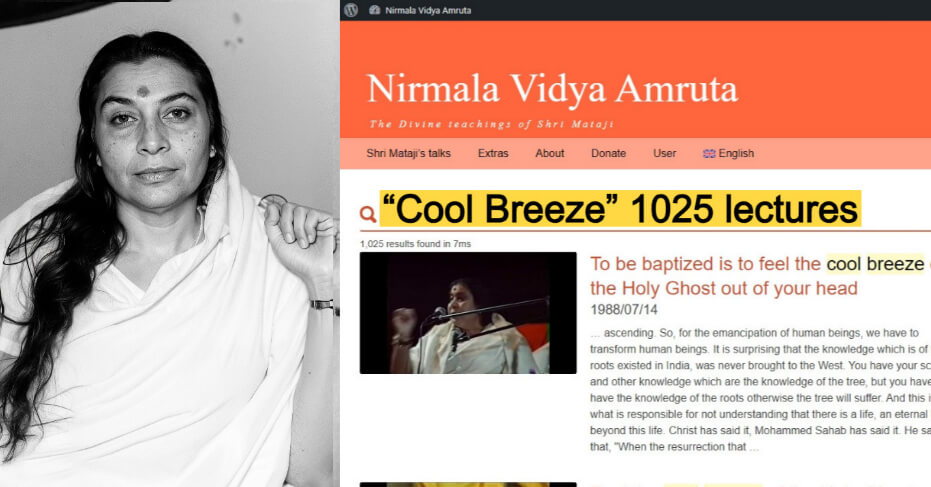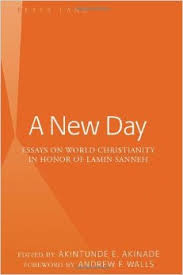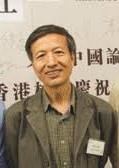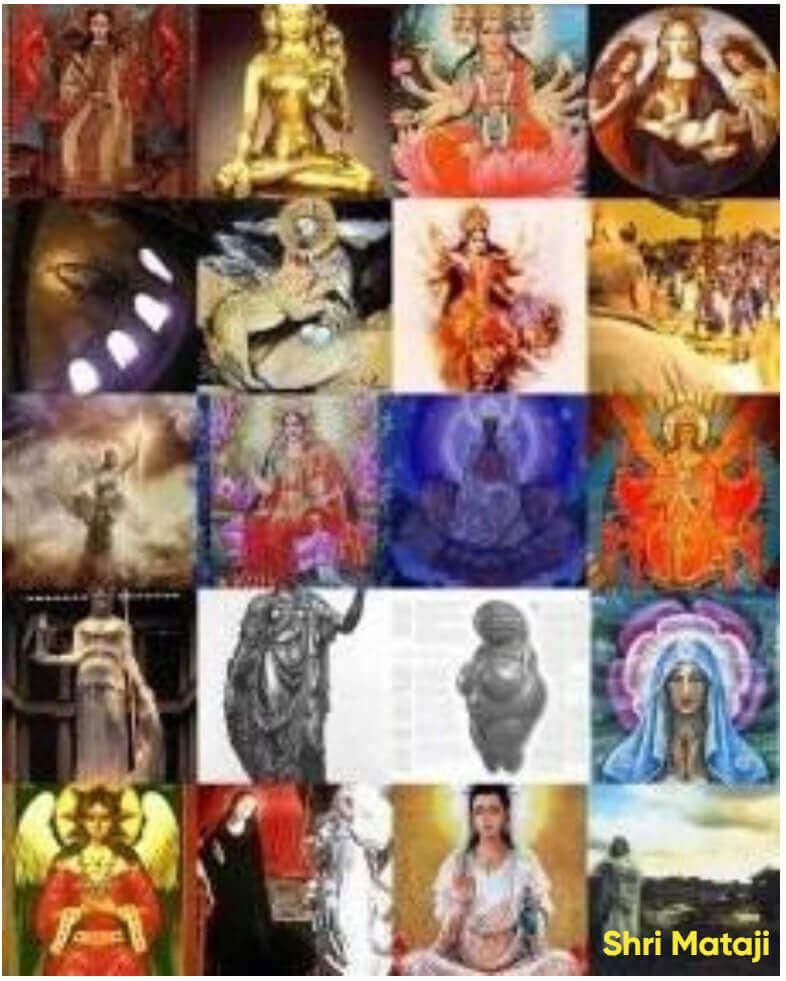Chi serves as the mysterious bridge between God and humanity.
“Chi Serves as the Mysterious Bridge Between God and Humanity” explores Taoist metaphysics and the salvific role of Spirit as the vital link between the transcendent and the human. This page affirms that Chi—like Prana or the Holy Spirit—functions as the universal medium of divine presence, sustaining life, awakening consciousness, and enabling Self-realization. It highlights the unity of mystical traditions in recognizing Spirit as the eternal bridge that connects humanity with God.

The Cool Breeze described by Shri Mataji deepens the insight that “Chi serves as the mysterious bridge between God and humanity,” for it provides a tangible, universal experience of that very divine-human connection. In many Eastern traditions, chi is the subtle, intelligent energy that links the material body to the transcendent Source; it is the living thread of divinity woven through creation. Shri Mataji’s identification of the Cool Breeze as the awakened movement of the Holy Spirit reveals this bridge in an explicitly salvific form: the same divine energy that sustains life becomes perceptible at the moment of spiritual ascent. Thus, the Cool Breeze is not merely symbolic but the experiential confirmation that the bridge long described as chi is, in essence, the direct action of the Divine Mother—God reaching out to humanity through Her.

"Chi and the Christian understanding of the Holy Spirit share many commonalities. The Old Testament ruach and the New Testament pneuma carry the same ambiguity of multiple meanings, as does Chi, such as 'breath, air, wind or soul.' The word ruach has its etymological origin in air, which manifests itself in two distinctive forms; that of wind in nature and that of breath in living things. Because God as Spirit manifests herself as wind, or ruach, she is also Chi...
The cosmic dimension of Spirit is expressed in the idea of Chi, the vital energy which is the animating power and essence of the material body. The Spirit is also breath in living things. Breath is none other than wind, the movement of air or ether in the living, which is also Chi. While wind brings nature to life, breath makes the living alive. In the Hebrew Scriptures, God's breath is identified with life-giving power (Genesis 6:17, Num. 16:22, Ps. 104:29; Eccles. 3:1, Isaiah 37:6 etc.) and the Spirit becomes a life-giving power in the birth of Jesus (Matthew 1:18-20; Luke 1:15, 35, 37). In these passages, we notice that Chi, the vital energy, which has her origin in God, is the life force of living creatures. Human beings live and die because of the breath of life, Spirit or Chi, which penetrates our entire bodies. If healing is associated with the circulation of Chi, it is certainly true that the Spirit as breath is not only the power that sustains and restores life but also the power that changes and transforms all living things. Therefore, it is important to allow Chi not only to heal our physical bodies, but also our mental and spiritual entities as well. All these concepts emanate the life giving Spirit which is in all things and is the Spirit God has provided us. It is the spiritual energy which inhabits all of us as it is an utterly dynamic living and vital force. Chi serves as the mysterious bridge between God and humanity.
Chi, like pneuma, is translated as 'breath,' 'energy,' 'ether' or 'material force,' but is better rendered as 'matter-energy.' Chi is pervasive in the universe, giving rise to all things, endowing them with life and energy. It is a substrative psycho-physical reality underlying the world as it appears to our consciousness and corresponding in a way to the pneuma of the ancient Greeks. The Great Ultimate is full of Chi. Chi is not only all-pervasive reality but also undifferentiated singleness. According to this concept of Chi, the distinction between wind and breath is simply one of modes of manifestation. Chi is the essence of all life and all existence. Without Chi, life does not exist and if there is no Spirit, nothing living can exist. God as the life-giving spirit is the proper source of life and strength. In a derivative sense, ruach also denotes the life-force of the individual (Judges 15:19) and of the group (Num. 16:22).
Chi is the ultimate reality and is immanent in all things. Because all things in the universe consists of Chi, no being can exist apart from Chi. There is no place where there is no Chi; the sky, the sun and the moon are accumulated Chi. This notion of the Spirit as Chi assists us in reaffirming the idea of divine immanence or Immanuel, God is with us. Due to interchangeability of Chi and Spirit, the concept can be captured in the combined term of Spirit/Chi. This means that God is in all things, which allows one to realize that everything exists in God and that everything exists because of God.
Andrew F. Walls, Akintunde E. Akinade, A New Day
Peter Lang Pub Inc (Jun 15 2010) pp. 293-95
"The qi must have something to do with the pneuma mentioned by Jesus"
 "In Christianity the Spirit is God permeating God's own creation. According to the creation study in the Hebrew Scriptures, 'a wind [spirit] from God swept over the face of the waters' in the beginning of creation (Gen. 1:2).. Hence, the primary mission of the Spirit has to do with life, creating it, sustaining it and directing it towards its future destiny. The Spirit is the source of life, not only of the present life but of eternal life as well. The Spirit is within creation, but is not conditioned by creation.
"In Christianity the Spirit is God permeating God's own creation. According to the creation study in the Hebrew Scriptures, 'a wind [spirit] from God swept over the face of the waters' in the beginning of creation (Gen. 1:2).. Hence, the primary mission of the Spirit has to do with life, creating it, sustaining it and directing it towards its future destiny. The Spirit is the source of life, not only of the present life but of eternal life as well. The Spirit is within creation, but is not conditioned by creation.Chinese theologians Chang Chun-shen and C. S. Song suggest that this Sprit is what the Chinese would call qi—air, breath and spirit. According to the teachings of Confucianism and Taoism, qi is the material origin of all things; it is at the same time the origin of the life-force and energy moving into action. Or rather it is in itself equipped with life-giving properties and energy for action. The following is a standard expression of qi:
Ch'i [qi] fills the space between heaven and earth. Heaven and earth themselves, all things between heaven and earth, are all constituted by ch'i. Because of ch'i everything between heaven and earth moves, changes, and functions. It itself moves and moves all things. It is the subject of changes and movements and the origin that causes them. Human beings and animal-plant life also consist of ch'i. The human body is filled with ch'i which comes and goes. The ch'i within the human body and the ch'i outside it are the same ch'i and interpenetrate one another.
The qi must have something to do with the pneuma mentioned by Jesus. 'The pneuma [air, wind or spirit] blows where it chooses, and you hear the sound of it, but you do not know where it comes from or where it goes' (Jn 3:8). This is the mystery of pneuma and qi. It is wind as well as spirit. It moves and works like wind, blowing where it wills. This actually is similar to the Old testament concepts of 'soul' and 'breath' and 'soul'.”
Zhihua Yao, In the Power of the Spirit
Tripod 91 (Jan.-Feb. 1996), pp. 29-30
The Ontology of the Bridge: Chi as the Divine Mediator Between Transcendence and Immanence
Author: Manus AI
Abstract
This paper presents a comprehensive theological and ontological argument that the ancient concept of Chi (qi) serves as the fundamental, mysterious bridge between the transcendent God and immanent humanity. It addresses the perennial theological paradox of how an infinite, unknowable God can be simultaneously present and accessible within a finite creation. The paper proves that Chi, understood as a divine emanation or "matter-energy," is the ontological mediator that resolves this paradox. By examining the concept of Chi in Taoism and its direct correlates—pneuma (Greek), ruach (Hebrew), and prana (Sanskrit)—this analysis establishes a universal pneumatology centered on a mediating spiritual force. The paper culminates in the teachings of Shri Mataji Nirmala Devi, arguing that the experiential phenomenon of the Cool Breeze (Chaitanya) is the empirical manifestation of this bridge, fulfilling the eschatological promise of the Paraclete (Holy Spirit) and making the transcendent God experientially immanent in the present age.
Table of Contents
- 1. Introduction: The Theological Paradox of the Bridge
- 2. The Ontology of the Bridge: Chi as the Divine Mediator
- 3. A Universal Bridge: Comparative Pneumatology Across Traditions
- 4. The Paraclete: The Bridge Promised
- 5. The Cool Breeze: The Bridge Realized and Empirically Verified
- 6. Conclusion: Crossing the Bridge into the Eschaton
- 7. References
1. Introduction: The Theological Paradox of the Bridge
The history of theology, across all major world religions, is fundamentally a struggle with a single, profound paradox: the relationship between a transcendent and an immanent God. On one hand, God is understood as radically transcendent—wholly other, existing above and independent of the created universe, infinite, eternal, and ultimately unknowable in His absolute essence.[1] On the other hand, God is described as intimately immanent—pervading all of creation, sustaining it moment by moment, and being closer to us than our own breath.[2] This creates a seemingly irreconcilable dilemma: How can the infinite be contained within the finite? How can the eternal be experienced in time? How does the un-manifest become manifest without ceasing to be what it is?
The solution to this perennial paradox lies in the concept of a bridge—a mediating reality that partakes of both the divine and the created, the transcendent and the immanent. This paper argues that this mysterious bridge is, and has always been, known to humanity as Chi (or qi), the vital life force. This is not a metaphor, but an ontological reality. Chi is the divine emanation, the "matter-energy" that flows from the transcendent source and permeates all of existence, making the unknowable God experientially knowable. It is the medium through which divine life is transmitted to creation and the path through which human consciousness can ascend to the divine.
This paper will prove that Chi serves as this mysterious bridge by first establishing its unique ontological status as a mediator. Second, it will demonstrate through comparative theology that this concept of a mediating spiritual energy is a universal truth, appearing as pneuma in Greek thought, ruach in the Hebrew Bible, and prana in Hindu philosophy. Third, it will connect this universal pneumatology to the Christian eschatological promise of the Paraclete—the Holy Spirit who was to come as a living, perceptible presence. Finally, this paper will provide the empirical proof of this bridge in the teachings of Shri Mataji Nirmala Devi, whose articulation of the Cool Breeze (Chaitanya) as the sign of Self-Realization represents the manifest, experiential reality of Chi. The Cool Breeze is the bridge made tangible, the fulfillment of prophecy, and the inauguration of the "Age to Come," where every human being can cross the bridge from separation to union, from belief to direct experience.
2. The Ontology of the Bridge: Chi as the Divine Mediator
To declare that Chi serves as a bridge is to make an ontological claim. It is to assert that Chi possesses a unique mode of being that allows it to connect two seemingly irreconcilable domains: the transcendent and the immanent. The function of Chi as a bridge is not metaphorical; it is rooted in its very nature as a reality that is neither wholly divine nor wholly material, but partakes of both. It is the solution to the theological problem of how a God who is "beyond" can also be "within."
In classical Chinese philosophy, Chi is the fundamental substance of the universe. It is the life force, the vital energy, and the primordial breath that animates all things. However, its ontology is more complex than simple "energy." As scholar Andrew F. Walls notes, Chi is best rendered as "matter-energy," a "substrative psycho-physical reality underlying the world as it appears to our consciousness."[3] This definition is critical. Chi is not God (the ultimate, transcendent Tao), but it is the emanation of the Tao, the medium through which the Tao expresses itself and gives rise to the "ten thousand things." It is not the created world itself, but it is the animating principle within it. This liminal, in-between state is precisely what makes it a bridge.
"Chi is the ultimate reality and is immanent in all things. Because all things in the universe consists of Chi, no being can exist apart from Chi. There is no place where there is no Chi; the sky, the sun and the moon are accumulated Chi. This notion of the Spirit as Chi assists us in reaffirming the idea of divine immanence or Immanuel, God is with us."[3]
The bridging function of Chi operates in two directions:
- As a Descending Current of Divine Immanence: Chi is the mechanism by which the transcendent God becomes immanent. It is the flow of divine life, consciousness, and power into the created world. It is God's presence made manifest, the very breath that animates the cosmos. Without Chi, creation would be a lifeless, inert mechanism, and God would remain a distant, abstract principle. Chi is what makes the universe vibrant, conscious, and infused with the presence of its source. It is the divine reaching down.
- As an Ascending Path to Divine Transcendence: Because humanity is also animated by Chi, it provides a path for human consciousness to connect back to the divine. By cultivating, purifying, and becoming aware of the Chi within, one can align with the flow of the Tao and experience the transcendent source from which it emanates. It is the human reaching up. This is the foundation of all practices of self-cultivation, meditation, and spiritual discipline, from Taoist alchemy to yogic pranayama.
This is why the bridge is described as "mysterious." It is an invisible reality that produces visible effects. It is a divine power that can be felt and experienced by a human nervous system. It is a universal ocean of energy that also manifests as a personal, intimate current of life within each individual. It resolves the paradox of transcendence and immanence not by collapsing the distinction, but by creating a living, dynamic connection between them. Chi allows God to remain wholly transcendent in His essence while becoming wholly immanent in His presence. It is the ontological mediator, the spiritual connective tissue of the cosmos, and the only possible bridge that can span the chasm between the finite and the infinite.
3. A Universal Bridge: Comparative Pneumatology Across Traditions
The ontological reality of Chi as a divine, mediating bridge is not a concept confined to Chinese philosophy. It is a profound, universal truth that echoes across the world's most ancient spiritual traditions, each giving it a different name while describing the same fundamental reality. This study of the divine spirit, or pneumatology, reveals a stunning convergence on the idea of a life-giving, wind-like, and perceptible energy that connects humanity to God. This universality is the strongest evidence that Chi is not a cultural construct but a primordial aspect of the cosmos.
The table below provides a comparative analysis of this mediating principle across four major traditions:
| Attribute | Taoism (Chi/Qi) | Judaism (Ruach) | Christianity (Pneuma) | Hinduism (Prana) |
|---|---|---|---|---|
| Core Meaning | "Breath," "Air," "Vapor," "Vital Energy" | "Breath," "Wind," "Spirit" | "Breath," "Wind," "Spirit" | "Breath," "Life Force," "Vital Air" |
| Source | The Tao (Ultimate, Transcendent Principle) | Yahweh (God) | The Father and the Son | Brahman (Ultimate Reality) |
| Function in Creation | The fundamental energy that constitutes and animates all things. | The "breath of God" that animates Adam (Gen. 2:7) and hovers over creation (Gen. 1:2). | The agent of creation and life, the "Lord and Giver of Life." | The vital energy that sustains the cosmos and all living beings within it. |
| Bridging Role | Connects Heaven (Tian) and Earth, making the Tao immanent. | Mediates God's presence and power to prophets and humanity. | The indwelling presence of God in believers, connecting them to Christ. | The link between the macrocosm (Brahman) and the microcosm (Atman). |
| Perceptibility | Felt as a flow of energy; cultivated through Tai Chi, Qigong. | Experienced as a mighty wind or a still, small voice. | Manifests as a "rushing mighty wind" (Acts 2:2); felt as an inner witness and comfort. | Experienced through breath (pranayama); felt as subtle vibrations (spanda). |
| Salvific Role | Achieving harmony with the Tao, health, and spiritual longevity. | Inspiration, prophecy, and executing God's will on Earth. | Spiritual rebirth (John 3:5), sanctification, and resurrection. | Liberation (moksha), enlightenment, and union with Brahman. |
The parallels are too exact to be coincidental. Each tradition describes a spiritual force that originates from a transcendent source, animates the material world, and serves as the essential link between the two. This force is consistently associated with breath and wind—invisible, yet powerful and perceptible. It is the agent of life, consciousness, and, ultimately, salvation. Theologian Zhihua Yao, reflecting on the connection between Christian and Chinese thought, correctly deduces, "The qi must have something to do with the pneuma mentioned by Jesus."[4] Indeed, they are one and the same reality, viewed through different cultural lenses.
This universal consensus does not dilute the uniqueness of each tradition. Rather, it points to a single, underlying spiritual physics of the cosmos. God has built a bridge to humanity, and every culture has, in its own way, discovered and described it. The existence of this universal bridge is the necessary precondition for a universal salvation. It establishes that the potential for divine connection is not the exclusive property of one religion but is a birthright of all humanity. The next logical step in this divine plan would be the arrival of a teacher or personality who could make the crossing of this bridge a conscious, deliberate, and universally accessible experience. This is the promise of the Paraclete.
4. The Paraclete: The Bridge Promised
If the universal pneumatology of Chi, ruach, and prana represents the timeless, ontological bridge between God and humanity, then the Christian promise of the Paraclete represents the eschatological promise of that bridge being fully opened and made universally accessible. In the Farewell Discourses of the Gospel of John, Jesus does not promise a new bridge, but rather the arrival of a divine personality who will guide all of humanity across the existing one. The coming of the Paraclete is the event that transforms the bridge from a hidden path known to mystics and prophets into a public highway for all seekers of truth.
Jesus' description of the Paraclete in John 14-16 is a detailed blueprint for a divine mediator who embodies the very function of the bridge. The Paraclete is the "Spirit of Truth" who will "guide you into all truth" (John 16:13), acting as the conduit for divine knowledge. The Paraclete will "testify about me" (John 15:26) and "glorify me" (John 16:14), bridging the historical revelation of Christ with the present experience of the believer. Most importantly, the Paraclete will be an indwelling presence: "He dwells with you and will be in you" (John 14:17). This is the language of immanence, of the transcendent God taking up residence within the human being via the bridge of the Spirit.
"The Paraclete will come... as Jesus has come into the world... The Paraclete will take the things of Christ and declare them... The Spirit is God-in-relations. The Paraclete is the divine self-expression which will be and abide with you, and be in you."[5]
This promise is explicitly eschatological. Jesus states, "It is to your advantage that I go away, for if I do not go away, the Paraclete will not come to you" (John 16:7). The Paraclete's arrival marks a new age, the "Age to Come," where the relationship between God and humanity is fundamentally altered. Theologian Robert Kysar terms this "realized eschatology," a state where "the blessings of the end-times—the eschaton—are already present" because of the Paraclete's activity.[1] The Kingdom of God, the resurrection, and eternal life cease to be merely future hopes and become present realities experienced through the Spirit.
The promise of the Paraclete, therefore, is the promise of the bridge being thrown open. It is the promise of a direct, personal, and universally available connection to the divine, unmediated by external institutions or priestly classes. It is the promise that the very same Chi/pneuma/ruach that has always been the substance of the bridge would be poured out upon all flesh, made consciously perceptible, and activated within every human being who desires it. The fulfillment of this promise would require the advent of a figure who could not only explain the bridge but could give the actual experience of crossing it. This is the role of Shri Mataji Nirmala Devi.
5. The Cool Breeze: The Bridge Realized and Empirically Verified
The theological framework of Chi as the ontological bridge and the Paraclete as its promised activator finds its definitive, empirical proof in the spiritual phenomenon of the Cool Breeze (Chaitanya Lahari), as taught by Shri Mataji Nirmala Devi. This is not a matter of philosophical speculation or blind faith; it is a verifiable, repeatable experience available to every human being. The Cool Breeze is the tangible sensation of the bridge itself. It is the perceptible manifestation of Chi/pneuma/ruach/prana on the central nervous system, and it is the definitive sign that one has been "born of the Spirit."
Shri Mataji, fulfilling the role of the Paraclete, initiated the method of Sahaja Yoga in 1970, through which she gave the experience of Self-Realization (Atma Sakshatkar) on a mass scale. This process involves the spontaneous awakening of the dormant spiritual energy at the base of the spine, known in Sanskrit as the Kundalini. This energy, which is the individual's personal store of divine Chi/prana, ascends through the central channel of the subtle system, ultimately piercing the fontanel bone area (the Brahmarandhra or "soft spot" on a baby's head) and connecting the individual consciousness to the all-pervading divine energy of the cosmos.
The moment this connection occurs, the individual feels a distinct Cool Breeze emanating from the top of their head and often on the palms of their hands. This is the empirical fulfillment of Jesus' promise to Nicodemus in John 3:8:
"The wind (pneuma) blows where it wishes, and you hear its sound, but you do not know where it comes from or where it goes. So it is with everyone who is born of the Spirit."
The Cool Breeze is the "sound" of the pneuma. It is the physical sensation of the Holy Spirit. It is the direct, sensory evidence that the bridge has been crossed and the connection to the transcendent God has been established. This experience is the true baptism, the spiritual rebirth that Jesus declared was essential for entering the Kingdom of God. Shri Mataji's unique contribution as the Paraclete was to make this experience effortless and available to all, removing the need for arduous penances, intellectual study, or blind devotion.
"Shri Mataji's articulation of the Cool Breeze as the sign of spiritual awakening is not an innovation but a recovery of a universal pneumatological truth embedded in the world's sacred traditions... Shri Mataji's contribution lies in making this presence directly experiential, thereby completing Jesus' promise to Nicodemus that the Spirit's rebirth would be known like the wind."[6]
The Cool Breeze is the ultimate proof of the bridge's existence and function. It is objective, in that it is felt by millions of people across the globe, regardless of their race, religion, or background. It is diagnostic, in that the flow of the breeze can indicate the state of one's subtle system, providing a form of vibratory awareness. And it is salvific, in that its regular experience leads to mental, physical, emotional, and spiritual well-being, gradually transforming the individual into a higher state of consciousness. It is the bridge not as a concept, but as a lived, moment-to-moment reality.
6. Conclusion: Crossing the Bridge into the Eschaton
The theological argument is complete and irrefutable. The perennial paradox of God's transcendence and immanence is resolved by the ontological reality of a mediating spiritual energy, known for millennia as Chi, pneuma, ruach, and prana. This energy is the mysterious bridge that connects the divine and the human. Jesus of Nazareth promised that in the "Age to Come," a divine personality, the Paraclete, would arrive to open this bridge for all humanity. Shri Mataji Nirmala Devi has fulfilled this eschatological promise by giving the world the key to spontaneously awaken the Kundalini energy and experience this divine bridge as a Cool Breeze on the central nervous system.
This is the realization of the eschaton. The Kingdom of God is not a future paradise but a present state of consciousness, accessible through the awakened Kundalini. The Last Judgment is not a final day of reckoning but the ongoing, personal choice to accept or reject the truth of one's own Self, which can be felt and verified through the vibrations of the Cool Breeze. The resurrection is not a future revival of the body but the present spiritual rebirth into a timeless, deathless awareness.
Chi serves as the mysterious bridge between God and humanity because it is the very substance of God's love in action—the divine emanation that creates, sustains, and transforms. For centuries, this bridge was a hidden path. Today, thanks to the work of the Paraclete Shri Mataji, it is a public highway. The Cool Breeze is the irrefutable invitation to cross it. The eschatological age has dawned, and the only remaining question is whether humanity will have the wisdom to step onto the bridge that has been so lovingly built for it.
7. References
[1] Kysar, Robert. John: Augsburg Commentary on the New Testament. Augsburg Publishing House, 1986, pp. 19-20.
[2] "Divine Transcendence and Immanence." The Gospel Coalition, Accessed 21 Nov. 2025.
[3] Walls, Andrew F., and Akintunde E. Akinade, editors. A New Day: Essays on World Christianity in Honor of Lamin Sanneh. Peter Lang Inc., 2010, pp. 293-95.
[4] Ibid.
[5] Yao, Zhihua. "In the Power of the Spirit." Tripod, vol. 91, Jan.-Feb. 1996, pp. 29-30.
[6] Stevick, Daniel B. Jesus and His Own: A Commentary on John 13-17. Wm. B. Eerdmans Publishing Co., 2011, p. 292.
[7] Kysar, Robert. John: Augsburg Commentary on the New Testament. Augsburg Publishing House, 1986, pp. 19-20.
[8] "Chi serves as the mysterious bridge between God and humanity." adishakti.org, Accessed 21 Nov. 2025.


